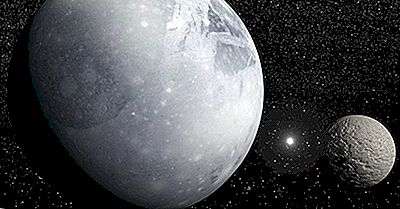A minor planet is a celestial object which revolves around the sun but is neither a planet nor a comet. The first minor planet was discovered in 1801. It was called Ceres and was also called a dwarf planet.
The term “minor planets” has its roots in the 1800s. The term asteroids , minor planets, and planetoids have been used interchangeably throughout history. However, the situation became more confused when the Committee for the International Astronomical Union (UAI) reclassified comets and minor planets into two new categories: small bodies in the solar system and dwarf planets. It was around this time that IAU also established a new definition of what a planet is, ultimately reclassifying Pluto as a dwarf planet.
How are small planets identified?
The ability of the minor planet to assume an approximately spherical shape is known as hydrostatic balance . The spherical shape is what distinguishes dwarf planets from smaller bodies in the solar system that have a more irregular shape. The terminologies can become even more confusing, as the IAU still recognizes the use of the name of minor planets.
The history of minor planets
Minor planets are a popular occurrence in the solar system. There are more than 400,000 registered minor planets and thousands more found every month. About 15,000 of the registered minor planets have been given official names while the rest are simply numbered. Astronomers have created symbols for the first asteroids discovered. Astronomers created symbols for 14 asteroids, some of which were very complex, such as the Symbol of Victoria . The symbol of Victoria looks like a plant that has three leaves growing out of an off-center star.
Some asteroids, such as Ceres, were named after characters from Roman and Greek mythologies. After the discovery of Pallas and Ceres, astronomers assumed that these two asteroids were two planets. Soon, astronomers ran out of mythological names and began naming asteroids after relatives of discoverers, famous people, and television figures. Most of these names were female, attributed to an anonymous tradition. As asteroids continued to increase in number, astronomers began to name them after their pets. Following the designation of a minor planet as 2309, Mr. Spock, the use of pet names was prohibited. However,
Categories of minor planets
Minor planets fall into different categories, including transneptunian objects, asteroids and centaurs. There are different types of asteroids. However, most of the asteroids are found in the asteroid belt, which is the region in the space between Jupiter and Mars. While transneptunian objects are celestial bodies that can be found in orbit beyond Neptune, centaurs are celestial bodies with unstable orbits located between Neptune and Jupiter. The categories mentioned often overlap, making the classification of these celestial bodies an arduous task. Ceres is an example: it is classified as a minor planet, a dwarf planet and also an asteroid.
Physical properties of minor planets
Little or almost nothing is known about most of the minor planets numbered and classified as asteroids. Aside from a few orbital elements and physical parameters, some of the physical characteristics of small planets are often only approximations. The physical data are determined using certain standard assumptions. For example, in addition to knowing the true densities of a few asteroids, mainly through in-depth surveys, most astronomers use enlightened riddles to determine the physical characteristics of small planets.

